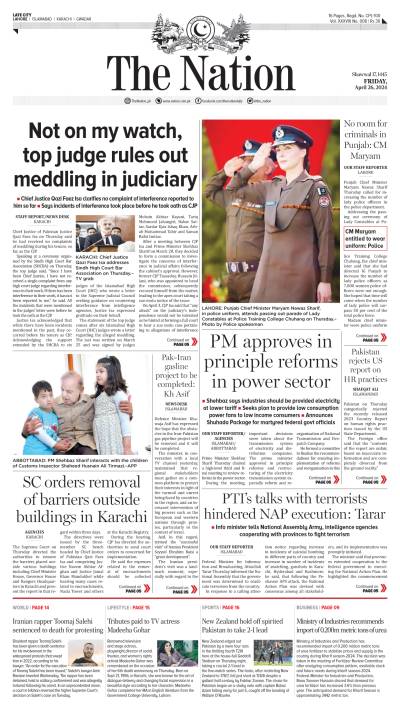ISLAMABAD - The World Bank on Wednesday projected that Pakistan’s GDP growth would approach to four percent during ongoing financial year 2013-14, driven by dynamic manufacturing and service sectors, better energy availability and early revival of investor confidence.
The World Bank, in its report ‘Pakistan Development Update 2014’, has forecasted that country’s GDP growth would be in range of 3.6 to 4 percent during current fiscal year 2013-14 against the government’s target of 4.4 percent. Growth is picking up, driven mainly by services and manufacturing. Similarly, growth has improved in wholesale and retail trade, finance, and insurance. Acceleration in growth of large-scale manufacturing came from strong performance of agro-based industries, iron and steel. Agriculture appears slightly below target owing to unfavorable weather conditions. On the demand side, growth continues to be driven by private consumption. Credit to the private sector has started to rebound and had posted nominal growth of 4.6 percent, y-o-y, as of mid-March 2014. However, private investment recovery is mild; and much of this is inherited from the crowding out of private-sector credit by government borrowing, which grew at close to nil in FY13.
The report also estimated that Pakistan’s budget deficit would be restricted at six percent of the GDP (Rs 1560 billion) during FY2014 mainly due to improved tax collection and restricted current and development expenditure. However, FBR collection is slightly below the target. On the expenditure side, energy-related subsidies have been reduced with tariff adjustments. However, while the government dealt with the stock of the circular debt, which has resulted in reduced load-shedding in the first months of the year, the circular debt is re-emerging.
The current account deficit remains modest, at around 1 percent of GDP, supported by strong remittances and export dynamism, and the external position is slowly improving since monetary and exchange rate policies switched gear toward rebuilding reserves last November.
According to the report, public debt remains above the 60 percent of GDP allowed by the Fiscal Responsibility Law, and justified by security reasons. As large fiscal deficits have been financed increasingly through domestic borrowing, rollover risk has increased. External financing available to the government is scarce, but expected to improve in the last two quarters.
The report highlighted three sources of risk appear worrisome included Pakistan imports more than it exports, the latter being constrained by low productivity and competitiveness, limited access to reliable energy, and cumbersome business regulations. Political events keep FDI flows and private investment low, which also affects foreign reserves. Uncertain political environment undermines investors’ confidence and depresses economic activity. The troubled domestic energy sector continues to endure a long-due complex inheritance on its circular debt which, contrary to the government’s plans, might affect the magnitude of fiscal adjustment.
However, Pakistan’s Emerging Markets Bonds Index Plus (EMBI+) risk spread keeps declining from the high levels shown at the start of the new administration. Market confidence in the government’s programme is bearing fruit, as the EMBI has almost halved from 1,011 basis points in March 2013 to around 468 basis points as of March 26, 2014. The government intends to benefit from it and return to the international markets with the placement of a $500 million - $1 billion Eurobond in the fourth quarter of the current fiscal year.
Friday, April 26, 2024
WB projects 4 per cent GDP growth for 2013-14
Better energy availability

Caption: WB projects 4 per cent GDP growth for 2013-14
18 matches decided on second day of PFF Futsal National Cup Phase 5
6:33 PM | April 26, 2024
Man City hammer Brighton 4-0 to be hot on English leaders Arsenal's trail
6:29 PM | April 26, 2024
Warriors guard Stephen Curry named NBA Clutch Player of the Year
6:28 PM | April 26, 2024
ECP releases notification of victorious candidates in by-election
6:26 PM | April 26, 2024
Economic Challenges
April 26, 2024
No Compromise
April 26, 2024
Strength and Solidarity
April 26, 2024
Musk vs Australia
April 25, 2024
Reforming Rehab
April 25, 2024
Photon power
April 26, 2024
Justice prevails
April 26, 2024
Ending animal suffering
April 25, 2024
AI governance
April 25, 2024
AI concerns
April 25, 2024
ePaper - Nawaiwaqt
Advertisement
Nawaiwaqt Group | Copyright © 2024





